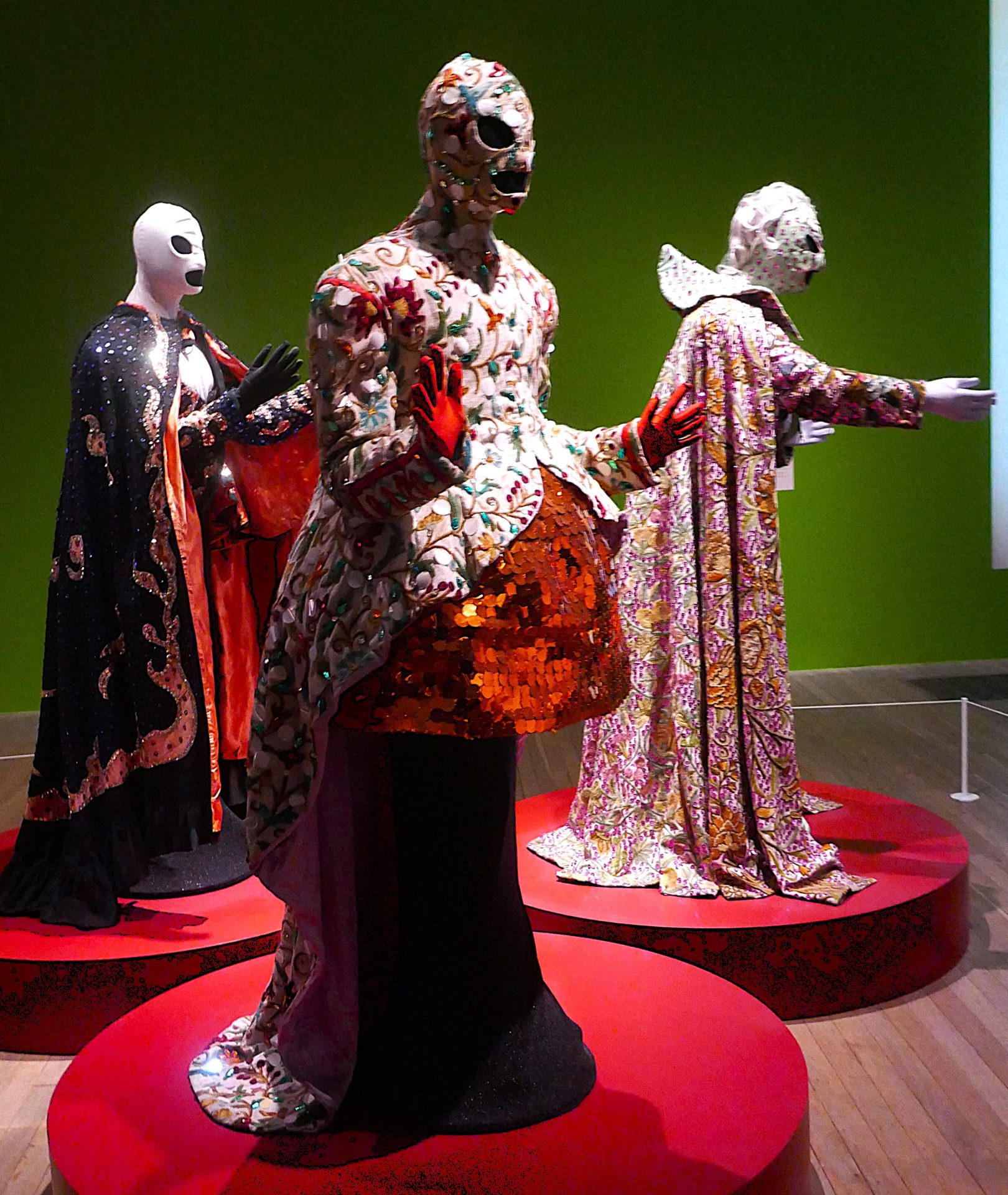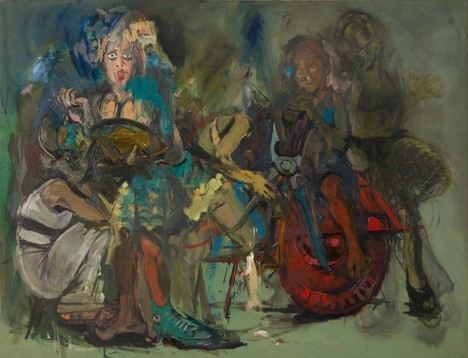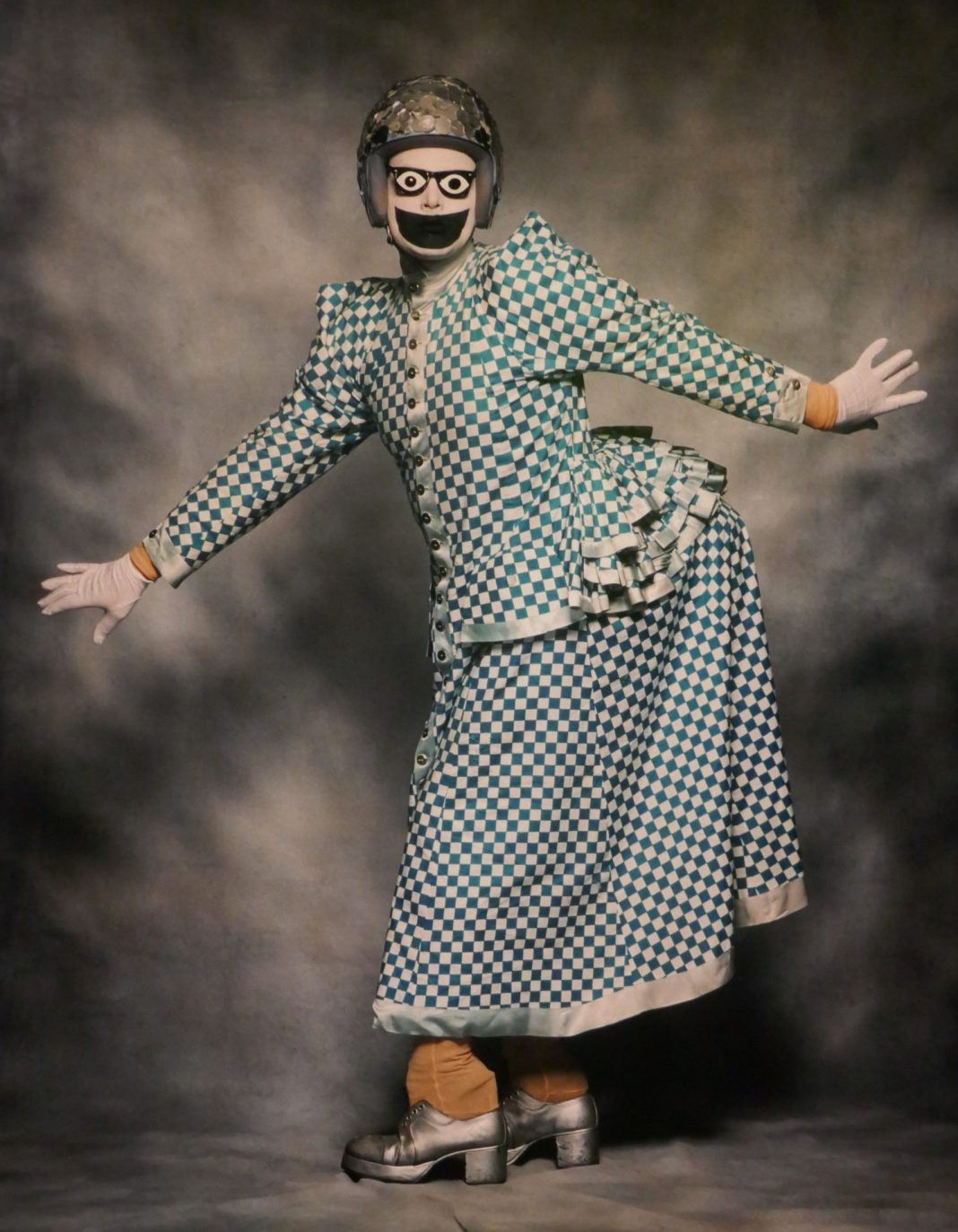Tate Modern’s “Leigh Bowery!” refuses easy categorisation—much like its subject
A fashion student from Sunshine, Melbourne, rocks up to London in 1980, writes ‘wear makeup everyday’ on his New Year’s resolutions, and proceeds to revolutionise performance art. Leigh Bowery (1961-1994) packed more artistic innovation into his 33 years than most manage in twice the time. Tate Modern’s retrospective proves why his influence still reverberates through contemporary culture. Considering Bowery’s own relationship with institutional capture, the irony isn’t lost.
Bowery famously declared, “if you label me, you negate me,” and this exhibition treats that complexity with appropriate seriousness. This isn’t another show about an “LGBTQ+ artist” or “club kid” but about pure artistic meritocracy in its most visceral form. It makes you question your own assumptions about art, identity, and why certain bodies make us uncomfortable.
Countering London’s fashionable “Hard Times” look (deliberately shabby, post-apocalyptic chic), Bowery went full maximalist. Sequined vinyl hats, platform boots, faces painted in abstract geometries that made Bowie look restrained. His early fashion collections weren’t just clothes but wearable sculptures that transformed the human body into something delightfully alien.
Bowery understood performance art’s fundamental principle: the individual is the artwork, not merely its vehicle. His legendary 1988 gallery performance Mirror at Anthony d’Offay crystallises this concept. A room divided by a two-way mirror: Bowery poses under spotlights for two hours daily, seeing only his reflection while audiences watch from the other side. Here, contemporary drag performances are turned into conceptually rigorous yet deeply unsettling pieces.
Fergus Greer’s photographs document this merger of body and art with methodical precision. Session VII, Look 38 shows Bowery as pure form—geometric patterns painted across skin, fabric distorting human anatomy into alien topography. These aren’t merely documentary shots but genuine collaborations, transforming photography into another performance medium.

The exhibition’s curatorial intelligence lies in refusing to confine Bowery within identity. Yes, he operated within queer club culture—his club Taboo was legendarily “London’s sleaziest, campest and bitchiest”—but his artistic project transcended demographic boundaries.
Jeffrey Hinton’s multimedia installation recreating Taboo’s aesthetic chaos demonstrates this perfectly. Layered video “scratches” (experimental films mixing pornography, surgical footage, and TV commercials), pounding club music, shifting lights—it’s genuinely overwhelming. You understand why bouncer Marc Vaultier would hold up that mirror, asking: “Would you let yourself in?” Most honest viewers would probably answer no, which was rather the point.
But what was Bowery stripped of makeup and clothes, outside of his performance den? Consider his collaborations with Lucian Freud, that bastion of the heterosexual artistic establishment. Freud painted Bowery “unmasked” (without makeup or elaborate costumes) on a larger scale than his usual portraits. But was this the “real” Leigh? Or simply another performance of authenticity? The paintings suggest Freud recognised that, even naked, Bowery remained fundamentally performative.
This artistic promiscuity proves Bowery’s point: talent trumps taxonomy. From fashion shows funded by unemployment benefits to Freud’s studio, from underground clubs to mainstream galleries, he succeeded purely on artistic merit. Contemporary influences from Alexander McQueen to Jeffrey Gibson prove his reach extends far beyond any single scene—he achieved that rare status of an artist whose work speaks louder than biography.
The exhibition preserves the raw, uncomfortable power of Bowery’s work without museum sanitisation. Dick Jewell’s film What’s Your Reaction to the Show? (1988) captures gallery-goers’ bewildered responses—faces cycling through disgust, fascination, and nervous laughter. This wasn’t art seeking approval but demanding visceral reaction, the kind that lingers uncomfortably long after viewing.
Bowery’s final performances pushed this methodology to logical extremes. His 1994 Birth piece with wife Nicola Rainbird (where she burst through his costume covered in fake blood and sausage umbilical cords) reads less as queer body politics than durational sculpture with theatrical flair. Think Marina Abramović (who sat motionless while audiences did whatever they wanted to her body) with sequins and considerably more bodily fluids.

Presented during the AIDS crisis peak, Bowery’s messy, confrontational work insisted on celebrating all aspects of human physicality. His death from AIDS-related illness on New Year’s Eve 1994 feels tragically premature, but his influence suggests that being utterly yourself—however weird that might be—can actually change the world.
The final rooms, tracing his increasingly extreme performances, feel genuinely elegiac. Not because we’ve lost a “queer icon,” but because we’ve lost an artist who proved that refusing categorisation could be its own artistic statement. In an era of increasing social media pigeonholing within arts discourse, obsessed with algorithmic consumption, Bowery’s insistence on pure artistic evaluation feels almost revolutionary. Today’s artists are routinely asked to define their sexuality or ethnicity before their aesthetics. Bowery understood this trap decades early, consistently deflecting biographical interrogation back to his work itself. And perhaps, as Oxford students, taught to question the world around us, we would do well to consider how Bowery’s viewpoint may affect our own lives.
Tate Modern has pulled off something tricky here: an exhibition that doesn’t try to tame its subject or explain away the bits that make you squirm. Bowery would dislike the stillness of a gallery floor – covered in photos and paintings, but he would absolutely love the fact that people are still walking out looking vaguely disturbed. Because let’s be honest, if art isn’t making you at least slightly uncomfortable, what’s the point?
★★★★☆
Leigh Bowery! runs at Tate Modern until 31 August 2025.


